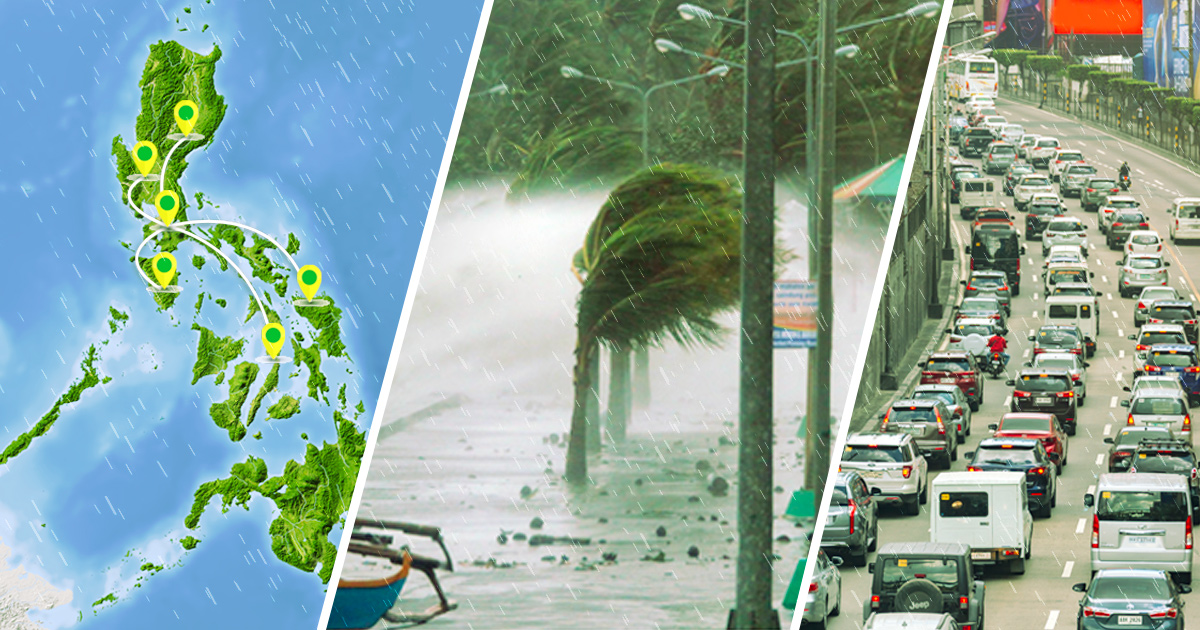MANILA, PHILIPPINES – Logistics is a simple principle, moving something from point A to point B quickly and reliably. Yet, it can grow to be a complicated elusive beast that is forever on the move. When the logistics industry is efficient, it works like a well tuned orchestra. On the other hand, when it doesn’t, it is like a non-stop headache with everyone screaming at each other.
Admittedly, Philippine logistics industry is challenging but many often point out only the superficial symptoms of the larger underlying challenges of logistics in the Philippines. This article aims to discuss the core challenges of logistics in the Philippines. Find out more by reading the article.
Core Challenges of Logistics in the Philippines
1) Geography
The Philippines is an archipelago with more than 7,000 islands. This affects all companies operating in the Philippines and not just logistics. Managing operations in the Philippines on a national scale feels like managing operations in 2 countries, Luzon and VisMin (Visayas + Mindanao). Let us further elaborate on why this is the case.
Travel is a hectic and inconvenient process when it is to, from or within the VisMin area because of the multiple modes and legs of the journey. This limits the movement of senior and mid-level managers thereby requiring more of them to serve smaller markets. This increase in mid-level management affects overhead and coordination.
The geographic separation of people over long periods of time developed 2 main local languages, Tagalog and Bisaya. One might quickly say that there are many languages spoken in other countries, why would this be a problem in the Philippines. But it is true, other countries face this complexity, but those countries often have a unifying national language that everyone understands. However, when a person from Luzon ventures to VisMin outside of the central business districts, language is challenging for that person. In Transportify’s case, drivers prefer training sessions in English over Tagalog.
“The decision to go national in the Philippines is tough because of the unit economics; the VisMin market is much smaller than Luzon yet the cost to serve that market is significantly higher”, a statement from an interview with Paulo Bengson, Country Director of Transportify Philippines. Geography is the core problem which is magnified by the some next challenges discussed in this piece: infrastructure, weather and scattered demand.
2) Poor Infrastructure
The core geographic challenge of the Philippines can be alleviated by sufficient infrastructure. However, the lack of it only magnifies the challenge. The symptoms of a lack of infrastructure can be seen in long lead-times, whether in personal travel or goods delivery.
Anyone living in the Philippines is all too familiar with the traffic problem which is simply a lead time to drive from point A to point B. The city has been cited many times as having the worst traffic on Earth with data from Waze and TomTom. Lead time is also experienced in other bottlenecks in our infrastructure. We also hear stories of port-congestion or trucks with relief goods for national calamities not being able to reach a location because of a lack of ferries to cross a body of water. There is a clear lack of roads, bridges and ports to move people and goods around the country.
Luckily, the challenge of poor infrastructure is not insurmountable. The past few administrations have focused on improving the country’s infrastructure, the efforts of which are finally being seen now and will continue to bear fruit in the near future. These projects include expressways, airports, bridges, road-transport-hubs and railroads. As of now, a Philippines fully connected by bridges is still not in our immediate future, but the improvements that are coming will bring significant welcome relief.
3) Weather (Typhoons)
The Philippines faces several typhoons and floods on a yearly basis and these weather conditions severely disrupt supply chains. The sea vessels and ferries, which allow goods to move between islands in the absence of a national bridge network, do not operate while some roads are blocked by floods or debris. This type of disruption forces consumer goods companies to have a higher level of inventories closer to the markets that they serve, and it translates to more overhead costs.
4) Demand pattern necessitates underutilization of assets
The flow of goods has a fixed capacity in terms of production, storage and transport. Logistics is the transport and storage part of the equation. The problem in the Philippines is the demand pattern throughout the year.
Q4 is the Christmas rush which is already crazy but then exacerbated by the sudden spending power of Filipino employees emanating from the mandatory extra month of salary before Christmas. Demand for goods and logistics services is like a rocket to outer space at this point in time.
Q1 is the lull period after Christmas. It’s like sleeping after a feast and waking up with a hangover. People are not doing much and there is much less consumption. It is the lowest level of consumption in the year.
Q2 is the summer season. Kids are out of school and in the process of going back to the following school year. This is often a period of remarkably high demand which is exacerbated every few years by the periodic election.
Q3 is the monsoon season. It’s raining and people don’t want to go outside. During this time, retail volumes are mediocre.
From an interview with Noel Abelardo, Transportify’s Head of Business Development, he said that the peaks and troughs of the annual demand pattern are most visible in the abrupt transition from the super high demand in Q4 to super low demand in Q1. It forces operations of logistics in the Philippines to make a tradeoff between reliability or dependability during high the demand period of Q4 and efficiency during the low demand period of Q1.
5) Scattered demand
One of the benefits of online retail is that people who are outside urban areas have access to goods that they would otherwise not be able to physically purchase. In reality, this is a competitive advantage of online retail that merely comes with a logistical challenge. However, in the Philippines, online retail’s opportunity to serve rural areas and the logistical challenges that come with it are made uniquely acute because remittances from Overseas Filipino Workers (OFWs), which is a big contributor to the country’s consumption-based economy, give people in rural areas of the Philippines significant purchasing power. Some of these areas are very difficult to serve, sometimes requiring unconventional modes of transportation.
When speaking about logistics reliability, it is important to remember that the larger objective is the availability of physical products to consumers. It is challenging to maintain product availability in an environment where it is challenging to move cargo around and typhoons necessitate higher inventory. The key point here is that better product availability in the Philippines will require unusually high overhead in terms of a larger logistics footprint. “The unfortunate reality is that most challenges in logistics like weather, scattered demand, geography and demand patterns are addressable, but infrastructure is another discussion that should be made.” another statement from Transportify’s Country Director, Paulo Bengson.
For most countries in the world, domestic logistics is simply storage and road transport. In the Philippines, a logistics operation needs to deal with air, land, sea, typhoons and different languages all at the same time. Transportify is publishing this information to help executives operating in the Philippines achieve a deeper understanding of logistics in the Philippines beyond the everyday noise. It would be presumptuous to say that Transportify is able to fully solve the challenges mentioned in this piece. But it is important to note that Transportify’s business model helps businesses manage demand fluctuation and logistics disruption.
Businesses can book Transportify’s trucking services as needed based on the market demand and our large network of thousands of truckers are available especially during times of disruption. Our reliability during periods of disruption was most evident during the ECQ lockdowns brought about by COVID-19 and the typhoons in November 2020.
✉️ Contact Media
Elijah Gabalda
Media Department
elijah.gabalda@transportify.com.ph
🚛 About Transportify
Transportify operates the largest app-based marketplace logistics platform for delivery vans and trucks in Southeast Asia with operations in Indonesia, Thailand and the Philippines. In other countries, the company is known as “Deliveree”.
To know more about Transportify, visit www.transportify.com.ph.
Frequently Asked Questions:
How did logistics in the Philippines manage the sudden change in the market brought by the pandemic?
🚚 The support of the government for continuous goods transportation has helped the logistics in the Philippines and other businesses to continue operating during the lockdowns. There is indeed a big fluctuation in the demand but companies are able to react to it fairly quickly with the help of industry experts to map out a concrete plan in handling logistics concerns that are arising.
How can a business overcome the challenges of logistics in the Philippines?
🚚 A business will be able to survive these challenges with the right goal setting and proactive planning. It is important to note that having a concrete plan can help a business survive any problems it may face. It is also good to invest in technology and manpower that can handle different routine procedures to reduce the risk of being affected by these core problems of logistics in the Philippines.
###









 Chat
Chat